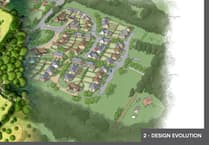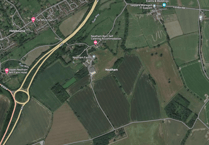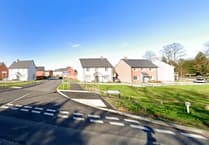The Farnham public can help block developers seeking to concrete over some of the town’s most vulnerable green spaces by backing a proposed extension to the Surrey Hills Area of Outstanding Natural Beauty, a councillor has said.
A planning inquiry related to Wates Developments Ltd’s long-held plans to push through plans for 146 homes either site of Waverley Lane in Farnham is scheduled to start at 10am on Tuesday next week and run for four days.
But after Natural England proposed the site should be included in the Surrey Hills Area of Outstanding Natural Beauty (AONB), with enough public support, Councillor Carole Cockburn (Conservative, The Bourne) hopes this may knock Wates’ plans into touch for good.
Cllr Cockburn, who is standing for re-election on May 4, said in a letter to the Herald printed on Page 17 of this week's print edition: “These are exciting times for the Surrey Hills. The proposed extension, which many of us have been seeking for several years, is out to final consultation and could soon become reality.
“If you are as passionate about protecting and enhancing our green spaces as I am, please visit the Surrey Hills AONB website (https://surreyhills.org/) and read the consultation document. The more support for our local candidate areas, the greater our chances of success.”
Wates, one of the UK’s leading privately-owned development companies, first saw plans for 190 homes on the site known locally as Compton Fields refused in 2015, and has since come back with five further applications for developments on the same fields.
The site is excluded as a potential housing site in the Farnham Neighbourhood Plan, which identifies sites agreed by the community for 2,780 new homes in the plan period 2013-2032.
But Wates has argued that as Waverley is unable to meet its government-set housing target and demonstrate a five-year supply of housing land, local planning policy is out of date and more housing sites are needed.
This argument was made at another three-day inquiry in late March, as Bewley Homes sought to overturn Waverley’s refusal of permission for 140 homes in Lower Weybourne Lane, on a site also excluded from the Neighbourhood Plan.
However, unlike Lower Weybourne Lane, Wates’ site in Waverley Lane is proposed to be included in the Surrey Hills AONB, which could weigh the balance in favour of the Fanrham Neighbourhood Plan.
Natural England’s consultation on proposed Surrey Hills AONB extensions in the Wey Valley and Dockenfield area, among others, launched on March 7 and will remain open for 14 weeks.
Lower Weybourne Lane planning appeal
The fate of a green field site in Lower Weybourne Lane hangs in the balance after a three-day inquiry into Bewley Homes’ appeal against Waverley’s refusal of planning permission for 140 homes concluded in March.
Bewley’s legal team argued the homes were needed to meet housing targets, while Waverley and Farnham councils stressed the need to protect the integrity of Badshot Lea as a distinctive area and maintain green corridors for wildlife, as well as raising flooding concerns.
Ultimately the decision whether or not to allow the homes will be made by a solitary housing inspector.
Cllr Cockburn, who defended the site's exclusion in the Farnham Neighbourhood Plan during the inquiry, said: "The Lower Weybourne Lane Inquiry was depressing, if completely predictable. The lack of a five-year supply of housing land and the fact that Waverley has no timetable for an update to Local Plan Part One rendered all policies out of date, including those in the Farnham Neighbourhood Plan.
"Third parties raised issues of coalescence, green infrastructure, biodiversity and flooding and the Farnham Design Statement and Farnham Neighbourhood Plan were widely quoted, to explain the need to protect the integrity of Badshot Lea as a distinctive area.
"We underlined the robustness of the site-selection process in the Farnham Neighbourhood Plan. Both Natural England and the Surrey Wildlife Trust were among the bodies that were consulted. This site was specifically left undeveloped both to maintain the separation of settlements and retain a green corridor between important sites for wildlife. Surrey has one of the worst records for the decline in species, mainly due to the fragmentation of the landscape and the inability of vulnerable species to move between habitats.
"The Inspector let me put in late submissions from both Janette Gallini and Catherine Powell on the flooding issue, which was positive."
The appeal inspector will visit the site next week, with a final decision to be published in coming weeks.




